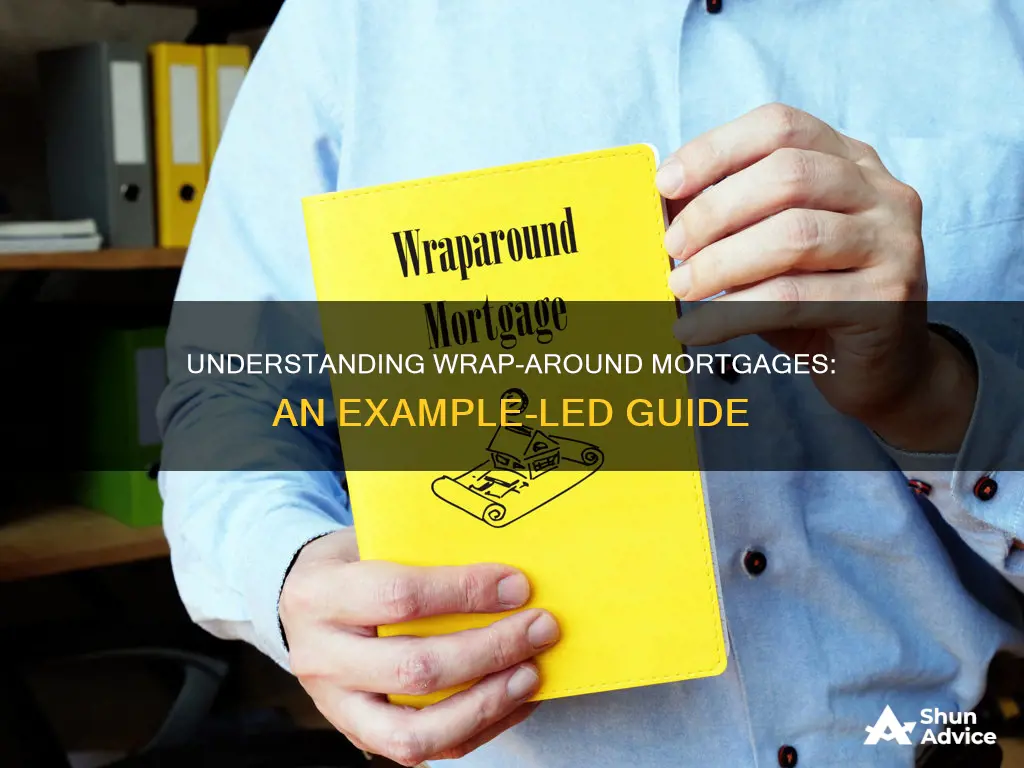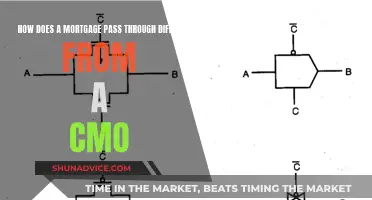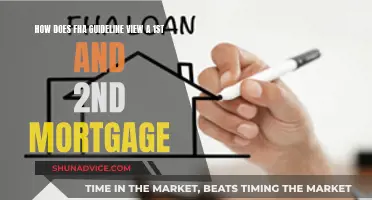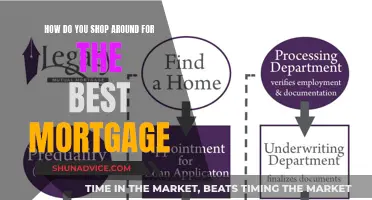
A wraparound mortgage is a creative way for a buyer to obtain financing for a property purchase by entering into a mortgage agreement with the seller instead of borrowing from a bank. The buyer's mortgage wraps around the seller's existing mortgage, and the buyer makes monthly payments directly to the seller, who then uses the proceeds to pay off their original mortgage. This type of arrangement can benefit both buyers and sellers by providing a quicker transaction, lowering barriers to ownership, and allowing for flexible negotiation. However, wraparound mortgages also come with risks, including higher-than-normal interest rates, the possibility of default, and legal complications.
| Characteristics | Values |
|---|---|
| Definition | A wraparound mortgage is a home loan that allows the seller to maintain their existing mortgage while the buyer's mortgage wraps around the existing amount owed. |
| Type of Loan | Junior loan |
| Risk | The wraparound mortgage is a junior lien, meaning the seller indirectly takes on the risk of the buyer defaulting on their original mortgage. |
| Interest Rate | The wraparound mortgage often has a higher interest rate than conventional mortgages, allowing sellers to profit from the rate charged to the buyer. |
| Example | Mr. Smith owns a house with a mortgage balance of $50,000 at 4% interest. He sells the house to Mrs. Jones for $80,000, who obtains a mortgage from Mr. Smith at 6% interest. Mrs. Jones makes payments to Mr. Smith, who uses them to pay his original 4% mortgage and keeps the profit from the interest rate difference. |
| Benefits | Easier for buyers to qualify; potential for lower closing costs; profit potential for sellers; larger pool of buyers. |
| Risks | Two potential sources of default and foreclosure; legal risk for sellers as the original lender must agree to the secondary loan; heightened credit risk. |
What You'll Learn

How wraparound mortgages work
A wraparound mortgage is a type of junior loan that wraps or includes the current note due on the property. It is a form of secondary financing for the purchase of real property. The seller extends to the buyer a junior mortgage that wraps around and exists in addition to any superior mortgages already secured by the property. In other words, the seller maintains their existing mortgage and acts as a lender to the buyer, extending them money to purchase the home. The buyer's mortgage "wraps around" the existing loan the seller has on the property.
In a wraparound mortgage, the buyer signs a promissory note, promising to make monthly payments directly to the seller. The seller then uses a portion of the buyer's monthly payments to continue making their mortgage payments. The monthly payments are made by the buyer to the seller, who then continues to pay the first mortgage with the proceeds. When the buyer either sells or refinances the property, all mortgages are paid off in full, with the seller entitled to the difference in the payoff of the wrap and any underlying loan payoffs.
Wraparound mortgages are often favoured when a buyer may not be able to obtain a favourable form of traditional financing from a bank or other lending institution. They also allow the buyer and seller to negotiate the transaction on their own terms, as there is no new outside lender involved. Wraparound mortgages are also quicker to close than traditional real estate sales, as the seller does not need to go through the process of applying for and receiving a loan from an outside institution prior to closing.
However, wraparound mortgages can be risky due to the fact that the seller-financier takes on the full default risk associated with both loans. They also introduce legal risk for sellers, as the original lender must agree to the secondary loan. Sellers must ensure compliance with the terms of their original loan and they continue to bear full responsibility for making payments on their mortgage.
Reporting Mortgage Insurance Premiums: A Comprehensive Guide
You may want to see also

Risks of wraparound mortgages
A wraparound mortgage is a unique form of seller financing that carries risks for both the buyer and the seller. Here are some key risks associated with wraparound mortgages:
Risk of Default and Foreclosure
One of the primary risks for buyers in a wraparound mortgage arrangement is the possibility of default and foreclosure. If the buyer fails to make their monthly payments, the seller may have to cover the buyer's debt to avoid mortgage default. In the event of a default, the original mortgage lender has the right to foreclose on the property and take possession of it. This means the buyer could lose the home, even if they have been making timely payments to the seller.
Unreliable Sellers
Buyers in a wraparound mortgage agreement also face the risk of dealing with unreliable sellers. If the seller defaults on their original mortgage, the property could go into foreclosure, even if the buyer is making timely payments. Buyers must trust that the seller will continue making payments as promised and that the original mortgage was assumable. If the lender did not approve the wraparound arrangement, they could also foreclose or call the mortgage in.
Higher Interest Rates
Wraparound mortgages often come with higher interest rates compared to conventional mortgages. The extra interest charged by the seller may exceed the rates offered by traditional lenders. This can result in higher costs for the buyer over the life of the loan.
Legal and Tax Risks
Wraparound mortgages also introduce legal and tax risks for both parties. Legally, the original lender must agree to the secondary loan, and the seller must ensure compliance with the terms of their original loan. Additionally, there may be tax implications associated with the assumption of existing debt by the buyer, which can negate the benefits of an installment sale.
Administrative Burden
Setting up a wraparound mortgage comes with an administrative burden. The seller becomes responsible for sending out statements and invoices, keeping track of payments, maintaining records, and properly accounting for the income on their tax returns. Failure to properly file can lead to issues with the IRS.
Unreliable Buyers
For sellers, one of the significant risks is dealing with unreliable buyers. The seller relies on the buyer to make timely and full payments. If the buyer stops paying, the seller may need to cover the monthly payments to the original lender to avoid default. This can strain the seller's finances and potentially hurt their credit score. Legal action against a non-paying buyer can also be costly.
Understanding Mortgage Company's Evaluation Process for Loan Limits
You may want to see also

Wraparound mortgages vs. second mortgages
A wraparound mortgage is a type of junior loan that wraps or includes the current note due on the property. It is a form of secondary financing for the purchase of real property. In this arrangement, the seller offers financing to the buyer to purchase the property. The buyer's mortgage "wraps" around the existing amount owed by the seller. Instead of paying a bank or lender, the buyer makes monthly payments directly to the seller. The seller then uses a portion of the buyer's monthly payments to continue making their mortgage payments.
A wraparound mortgage is a convenient option when a buyer cannot qualify for a traditional mortgage loan. It helps both the buyer and the seller close the deal. However, it is not without risks. The wraparound mortgage takes the second or junior lien position, while the seller's mortgage remains in the first lien position. If the buyer fails to make their monthly payments and the default results in foreclosure, the seller's lender will get repaid first from the sale of the home. The seller will then receive any leftover funds.
A second mortgage, on the other hand, is a type of subordinate mortgage made while an original mortgage is still in effect. The interest rate charged for the second mortgage is usually higher, and the amount borrowed is determined by the equity in the home. In a second mortgage, the original mortgage balance and the new price combine to form a new mortgage. For example, a homeowner with a mortgage balance of $50,000 at 4% interest sells the home for $80,000 to a buyer, who obtains a mortgage from the seller or another lender at 6% interest. The buyer makes payments to the seller, who uses those payments to pay their original 4% mortgage. The seller profits from the difference in the purchase price and the original mortgage, as well as the spread between the two interest rates.
A key difference between wraparound and second mortgages is in the treatment of the balance due from the original loan. A wraparound mortgage includes the original note rolled into the new mortgage payment. The wraparound mortgage is a junior mortgage, and in the event of default, the original mortgage would receive all proceeds from the liquidation of the property until it is paid off. The seller indirectly takes on the risk of the buyer defaulting on their original mortgage.
Valuing Mortgage Servicing Rights: What You Need to Know
You may want to see also

Wraparound mortgages for buyers
A wraparound mortgage is a unique form of seller financing that does not involve a conventional bank mortgage. In this scenario, the seller acts as the lender, offering a loan to the buyer that "wraps around" their original loan. The buyer then makes monthly payments directly to the seller, who uses this money to pay off their own mortgage.
Wraparound mortgages can be beneficial for buyers who are unable to qualify for traditional financing, perhaps due to a poor credit history, or those who are looking for more flexible requirements and creative financing options. For example, a buyer could negotiate seller financing to purchase with a smaller down payment in exchange for delayed title transfer. This type of arrangement also allows for more room in the financing options, as the negotiations take place directly between the seller and the buyer.
Wraparound mortgages can also be advantageous for buyers in terms of interest rates. Buyers may be able to secure a better rate than they would otherwise be able to lock in with a traditional mortgage. This could mean a lower rate than current market rates or one that is more affordable based on their qualifying factors. Additionally, in a low-interest-rate environment, this type of seller financing can be particularly attractive to buyers.
However, it is important to note that wraparound mortgages carry risks for both buyers and sellers, and they are considered a more advanced technique in the real estate investment financing toolkit. For example, in the event of default, the original mortgage lender will be repaid first from the proceeds of a foreclosure sale, and the buyer may face eviction rather than foreclosure and lose all the money they have paid toward the instalment sale. Therefore, it is recommended that both parties work with an experienced real estate attorney to guide them through the process and reduce the risks involved.
Understanding the Basics of Mortgages: A Step-by-Step Guide
You may want to see also

Wraparound mortgages for sellers
A wraparound mortgage is a type of junior loan that wraps or includes the current note due on the property. The wraparound loan will consist of the balance of the original loan plus an amount to cover the new purchase price for the property. With a wraparound mortgage, the seller offers financing to a homebuyer to purchase the property.
In a wraparound mortgage, the seller keeps the existing mortgage on the home. They offer seller financing to help the buyer complete the purchase and then wrap the buyer’s new loan over their existing mortgage. In this situation, the seller takes on the role of the lender. The buyer and seller agree to a down payment and loan amount, then sign a promissory note laying out the mortgage’s terms. After both parties finalize the transaction, the seller transfers the title and deed to the buyer. While the seller continues to make payments on the original mortgage, they no longer own the home.
For a wraparound mortgage to work, the seller’s mortgage must be an assumable mortgage. If not, the seller’s lender may see a wraparound agreement as a violation of the original loan terms. The wraparound mortgage takes the second or junior lien position, while the seller’s mortgage remains in the first lien position. If the buyer fails to make their monthly payments and the default results in foreclosure, the seller’s lender will get repaid first from the sale of the home. As the junior lien “lender,” the seller will receive any leftover funds after the original lender is fully repaid.
Wraparound mortgages can be advantageous for both the buyer and the seller. They are easier to obtain, and the buyer might also be able to borrow less than if they were purchasing the property with a loan of their own, or pay a lower interest rate. Buyers won't have to wait through a lender's long underwriting process and may be spared many mortgage-related closing costs. For sellers, wraparound mortgages offer the opportunity to reach a larger pool of buyers and profit from the difference between the rate on their existing mortgage loan and the buyer's new rate.
However, wraparound mortgages are not without risk. They introduce legal risk for sellers, as the original lender must agree to the secondary loan. Sellers must ensure compliance with the terms of their original loan and they continue to bear full responsibility for making payments on their mortgage. If the buyer stops making payments, the seller must cover their original mortgage payment or risk mortgage default.
Understanding Mortgage Increases: Factors Behind Rising Payments
You may want to see also
Frequently asked questions
A wrap-around mortgage is a type of junior loan that allows the seller to maintain their existing mortgage while the buyer's mortgage "wraps" around the existing amount owed. Instead of paying a bank or lender, the buyer makes monthly payments directly to the seller.
Wrap-around mortgages can benefit both buyers and sellers. Buyers may find it easier to qualify for a wrap-around mortgage as they typically have more flexible requirements and don't involve a conventional bank mortgage. Sellers can profit by offering an interest rate higher than their original mortgage, and this type of financing can help them reach a larger pool of buyers.
Wrap-around mortgages are not common and can be risky for both parties. Buyers risk the seller not making their monthly payments, which could result in foreclosure. Sellers need to ensure their lender allows this arrangement and perform due diligence on the buyer's finances.







